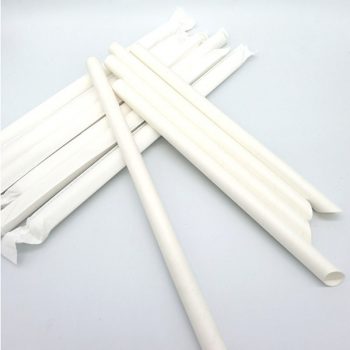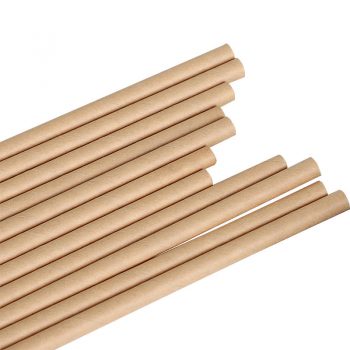With the current vigorous advancement of environmental protection, the “plastic restriction order” has been vigorously promoted in many cities. Many shops have begun to replace plastic straws with environmentally friendly straws. What types of environmentally friendly straws are there? Mainly polylactic acid straws, paper straws, starch straws and so on. And when using it, everyone should be good at using skills to resolve contradictions in related aspects. In the article, the editor will give you a detailed introduction to the specific types of environmentally friendly straws and how to solve the contradictions in use.
Specific types of environmentally friendly straws:
1. Polylactic acid straw
PLA straws use renewable plant resources lactic acid as raw materials. It has the advantages of renewable raw materials, fully degradable and bio-safe. It is a project developed on the basis of traditional polypropylene straws in recent years.
The production process is simple and the production cycle is short. It adopts a one-time extrusion molding process. With the help of the extrusion of the screw, the heated and melted PLA particles are extruded through the die and cut into various shapes after being cooled and shaped by a water tank under pressure. Various specifications of straws.
2. Paper straws
paper straws use food-grade virgin wood pulp paper as the main raw material, and its production process is processed by three or four-layer food-grade raw paper with glue, tube winding, slitting, drying and other steps. During the molding process, you need to pay attention to factors such as machine speed and glue volume, and adjust the straw diameter through the size of the mandrel. The entire production process of paper straws is relatively simple and easy to mass produce.
3. Starch straw
Starch straws are produced using natural crop starches such as wheat, rice, corn, cassava, potatoes, etc. as the main raw materials. After extensive verification and testing, they can meet the needs of contacting different beverages and dairy liquids.
Starch straws will not melt when in use, but they are also edible, do not cause pollution, and can achieve the purpose of environmental protection. The production process of starch straws abandons the traditional straw production method and creates a brand-new production method.
Techniques to solve the contradiction between plastic straws and paper straws:
1. The idea of reducing the use of plastic straws is to change the habits of the public, such as advocating consumers to use direct drinking, or bringing their own stainless steel, silicone and other reusable straws. Although these two ideas sound appropriate, they are not entirely reasonable.
2. The first is direct drinking. We will not mention the rigid demand of special people for straws for the time being. Even ordinary people, if the product they drink is pearl milk tea, which requires a straw to feel the special “happy” drink, direct drinking is undoubtedly a blow Its audience experience.
3. Secondly, there are reusable straws such as stainless steel and silica gel. On the one hand, these straws have more or less disadvantages in use or safety issues. On the other hand, for families without dishwashers, this This straw is very difficult to clean.
4. In fact, whether paper straws or stainless steel straws, they generally think about the function of straws and try to achieve the same effect with existing materials. But objectively speaking, the two advantages of plastic straws are not considered-soft and durable.
5. Does that mean that there is no other material that can do the same for these two points? Naturally it is not. For example, plant straw straws that are currently under development are a good direction. However, if you want to completely replace plastic straws, you need to further test the physical and chemical properties of environmentally friendly straws.
6. Only when the basic characteristics of environmental protection straws are equivalent to those of plastic straws, can it truly become an environmentally friendly substitute for disposable plastic straws.





























